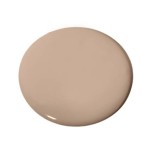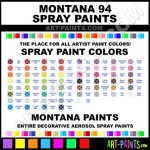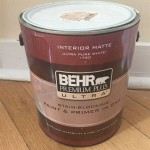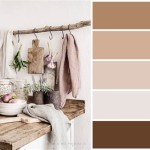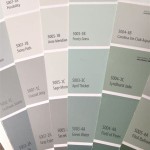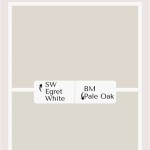Most Popular Paint Colors 2024: A Trend Forecaster Who Doesn't Think So
Predicting the most popular paint colors for the upcoming year is a significant industry, influencing manufacturers, interior designers, and homeowners alike. Color trends can shape product development, marketing strategies, and ultimately, the aesthetic of homes and commercial spaces. While many forecasters rely on historical data, socio-cultural shifts, and even economic indicators to anticipate the leading hues, a dissenting voice suggests that the concept of definitively "most popular" paint colors is becoming increasingly outdated and less relevant in 2024.
This alternative perspective, championed by a trend forecaster preferring to remain anonymous due to potential marketing repercussions, argues that the rise of personalization, readily available inspiration through digital platforms, and a greater emphasis on individual expression are eroding the dominance of a few key colors. Instead, the market is diversifying into a wider spectrum of preferences, with regional variations and specific application contexts playing a more crucial role.
Traditional trend forecasting often involves identifying a handful of colors that are expected to resonate widely across various demographics. These predictions are typically based on extensive research, analyzing data from fashion, design, technology, and societal movements. Paint manufacturers invest heavily in understanding these trends to ensure their product lines align with consumer demand. Interior designers rely on these forecasts to guide their clients towards contemporary and desirable aesthetics.
However, the evolving landscape of interior design is challenging this conventional approach. Social media platforms like Pinterest and Instagram have democratized access to visual inspiration, allowing individuals to curate their own unique styles and discover niche preferences that might not be captured by mainstream trend reports. The sheer volume of accessible imagery empowers individuals to identify colors that personally resonate with them, rather than conforming to pre-determined "popular" choices.
Furthermore, the increasing emphasis on sustainability and mindful consumption is influencing color choices. Consumers are more likely to select paints that align with their values, such as those with low VOC (Volatile Organic Compounds) content or those produced by companies with ethical sourcing practices. This focus on values can sometimes supersede the desire to adhere to trending colors, prioritizing personal beliefs over fleeting aesthetic preferences.
The Rise of Hyper-Personalization in Color Selection
One of the key arguments against the idea of universally popular paint colors is the emergence of hyper-personalization. This trend is driven by the availability of advanced color matching technologies and the willingness of consumers to invest in creating spaces that reflect their individual personalities. Rather than selecting from a limited range of trending colors, homeowners can now easily match paint to existing furniture, artwork, or even sentimental objects.
The ability to precisely replicate colors has opened up new possibilities for customization. Consumers are no longer limited to the shades offered by paint manufacturers; they can create custom blends that perfectly match their desired aesthetic. This shift towards personalization is empowering individuals to express their unique tastes and preferences, further fragmenting the market and diminishing the influence of broad color trends.
Moreover, the rise of DIY (Do-It-Yourself) culture has contributed to the diversification of color choices. Homeowners are increasingly taking on interior design projects themselves, experimenting with different colors and techniques to create unique and personalized spaces. Online tutorials and resources provide readily accessible guidance, empowering individuals to confidently explore color combinations that might not be considered mainstream or "on-trend."
The trend forecaster highlights the importance of understanding individual color psychology. The emotional connection people have with specific colors is highly subjective and influenced by personal experiences, cultural background, and individual preferences. Attempting to impose a narrow range of "popular" colors risks overlooking the nuanced relationships people have with their environments and the potential for color to evoke specific emotions and memories.
Regional Variations and Context-Specific Preferences
Beyond individual personalization, regional variations play a significant role in shaping color preferences. Geographic location, climate, and cultural traditions can all influence the colors that resonate with a particular community. What might be considered a popular color in one region could be completely overlooked or even deemed unsuitable in another.
For example, coastal communities often gravitate towards lighter, brighter colors that reflect the natural light and evoke a sense of airiness and relaxation. In contrast, regions with colder climates might favor warmer, richer colors that create a cozy and inviting atmosphere. Cultural traditions and historical influences can also shape color preferences, with certain colors holding symbolic significance within specific communities.
Furthermore, the intended use of a space significantly impacts color choices. Colors that are appropriate for a bedroom might not be suitable for a kitchen or a home office. The function of a room, the amount of natural light it receives, and the desired mood all play a crucial role in determining the optimal color palette.
The forecaster emphasizes the need for paint manufacturers and interior designers to move beyond broad trend predictions and adopt a more nuanced approach that considers regional variations and context-specific preferences. This requires a deeper understanding of local cultures, environmental factors, and the specific needs and desires of individual clients.
The architecture of a building also plays a key role. Historic homes often demand a different color palette than modern constructions. Certain architectural styles pair well with certain colors, therefore the design of the building also play a critical role in the color selection.
The Impact of Digital Saturation and Visual Overload
The constant exposure to visual information through digital platforms has created a sense of visual overload, leading to a diminished attention span and a greater desire for authenticity. Consumers are increasingly seeking out colors that feel genuine and honest, rather than those that are simply trendy or aesthetically pleasing.
The saturation of imagery on social media has also led to a sense of homogenization, with many homes and interiors starting to look remarkably similar. This has fueled a desire for individuality and a rejection of cookie-cutter aesthetics. Consumers are actively seeking out ways to differentiate their spaces and express their unique personalities, which often involves deviating from mainstream color trends.
The forecaster suggests that the focus should shift from predicting the "most popular" colors to understanding the underlying emotional needs and desires that drive color choices. This requires a deeper understanding of human psychology and the ability to translate abstract concepts into tangible color palettes that resonate with individual clients.
Ultimately, the future of color trend forecasting may lie in providing personalized recommendations and guidance, rather than dictating a limited range of "popular" colors. This approach would empower consumers to make informed choices that reflect their unique personalities and create spaces that truly resonate with them.
Companies are responding in different ways to this predicted shift. Some are investing in AI (Artificial Intelligence) tools that assess a persons likes and dislikes. Others are providing consultants to provide home owners a more one-on-one experience to guide them.

The Most Popular 2024 Paint Color Trends

The Most Popular 2024 Paint Color Trends

The Most Popular 2024 Paint Color Trends

2024 Wall Color Trends West Magnolia Charm

The Most Popular 2024 Paint Color Trends

The Most Popular 2024 Paint Color Trends

The Most Popular 2024 Paint Color Trends

Jrl Interiors Decorating With Pantone Color Of The Year 2024 Peach Fuzz

Sherwin Williams Paint Color Of The Year 2024 Bsd Interior Design Studio

Sherwin Williams Paint Color Of The Year 2024 Bsd Interior Design Studio
Related Posts

